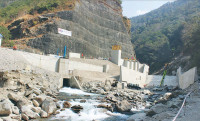Letters
The Indo-Pacific Strategy is not a military alliance
Unlike China’s Belt and Road Initiative, which required countries like Nepal to ‘sign up’ in order to benefit, there is nothing for Nepal to join.
While it is commendable that the Kathmandu Post publishes opinions from diverse writers, including from China, the essay by Gao Liang (‘The Indo-Pacific Strategy is a bad idea,’ July 8, TKP Online) repeats a number of factual errors, including the red herring that this overarching US policy approach in the Indo-Pacific region is a military alliance. Unlike China’s Belt and Road Initiative, which required countries like Nepal to ‘sign up’ in order to benefit, there is nothing for Nepal to join. The US government uses the Indo-Pacific title to define its own activities in the region—it does not encumber other governments. In Nepal, the United States is already carrying out activities that are consistent with our goals for the region—everything from our support to Nepal’s health sector to our provision of $500 million in grants under the Millennium Challenge Corporation contributes to the objectives of fostering an Indo-Pacific region that is prosperous, free, and open. AsAs Gao Liang acknowledged, China’s rise was made possible by the rules-based order that the United States—through our development assistance, open trade policies, and, yes, our military presence—has helped safeguard since the end of World War II. All we have asked of Nepal—as we have of every other country, including China—is that Nepal too conducts itself according to the principles of a free and open, rules-based order and that Nepal expects others to do the same.
Paul Thomas, Public Affairs Officer, US Embassy




 17.12°C Kathmandu
17.12°C Kathmandu





%20(1).jpg&w=300&height=200)

